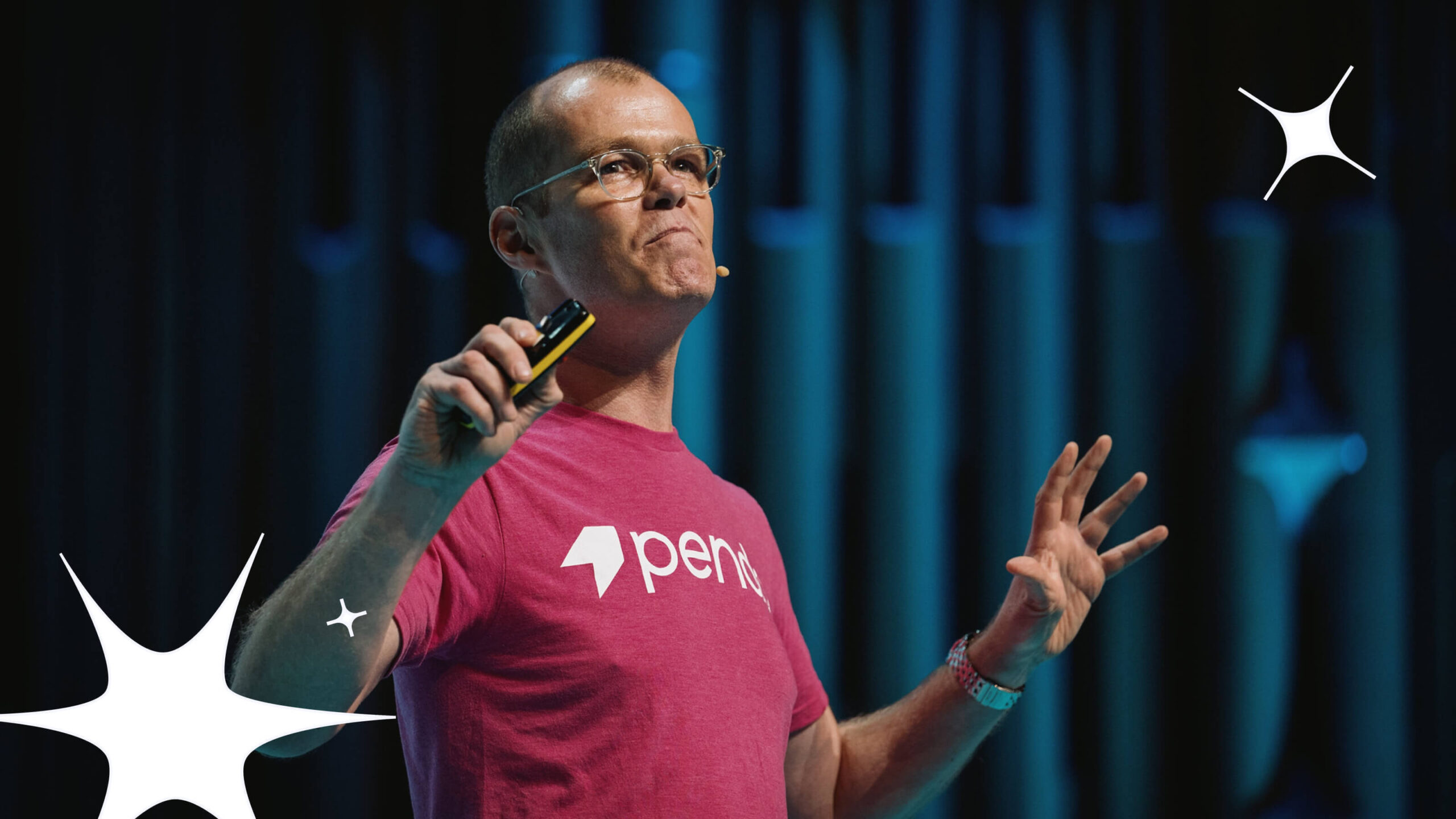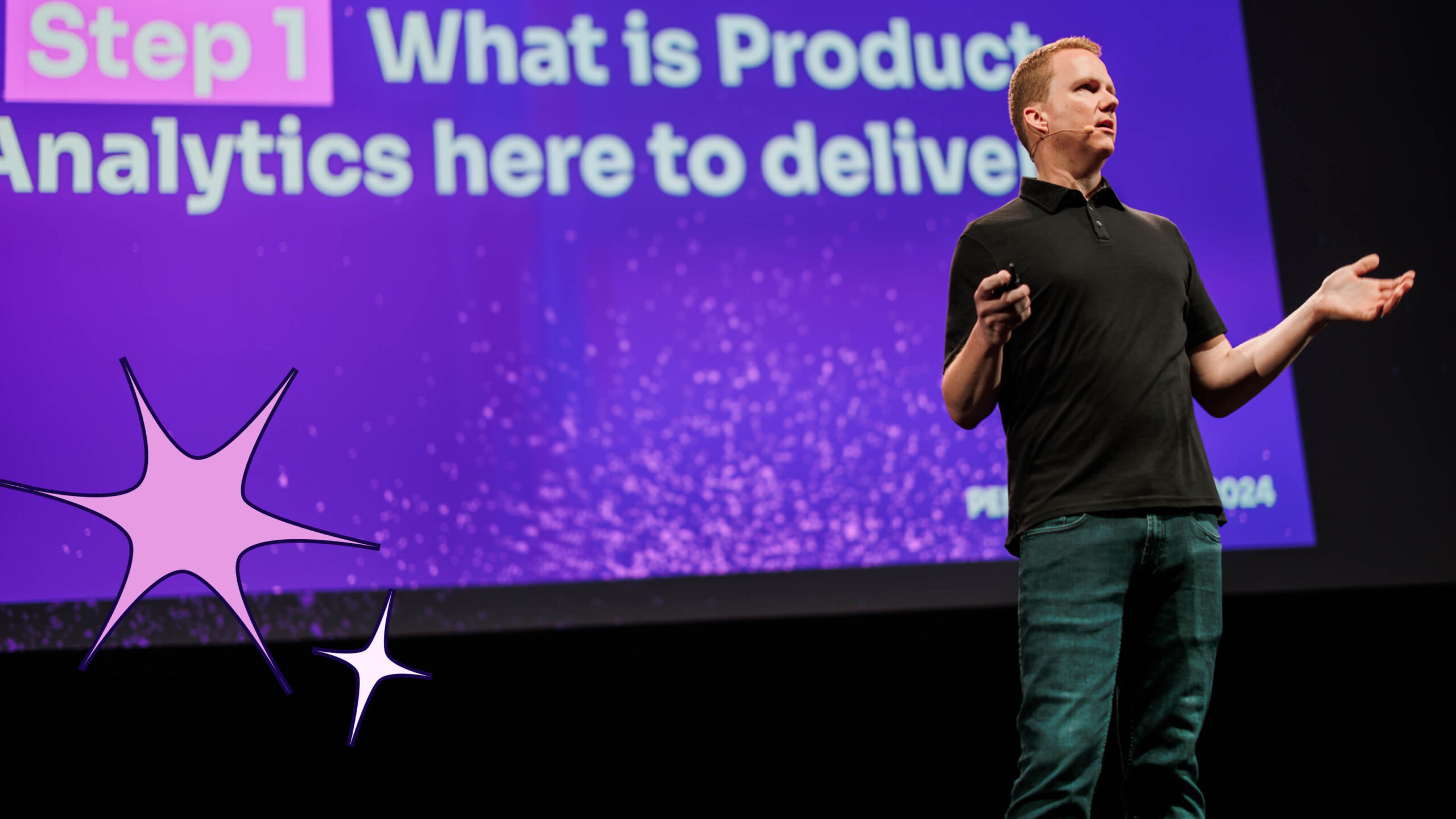Editor’s note: The Pendo Simon beta and design partner program is now closed.
The concept of roadmapping isn’t anything new. Product roadmaps have been around for years, with product managers (PMs) using them to help plan what to focus on now, next, and later in terms of their product’s features and functionality.
But there have been exciting things brewing in the world of roadmaps in recent years. As product management has become increasingly cross-functional, the role of the PM has also evolved. Now, PMs are part-product storytellers, part-data analysts, and part-sales enablers—with their organizations looking to the roadmap to do a lot of the heavy lifting.
Hannah Chaplin (director, product marketing at Pendo) and Rebecca Notté (product operations manager at Pendo) recently sat down to talk about product roadmapping—how it’s changed, where it’s going, and best practices for building roadmaps that inspire confidence and innovation.
Read on for the recap of Hannah and Rebecca’s discussion, or scroll to the bottom of the page to watch the full webinar recording.
Roadmaps are vehicles for storytelling
As roadmapping technology has improved and enabled PMs to make their product roadmaps visible to broader swaths of stakeholders, roadmaps have evolved into somewhat of a sales tool in their own right.
Sales teams can point to features or initiatives on the roadmap to inspire confidence and close deals with prospects. Success teams can more easily scale their outreach by using the roadmap to ground discussions and expand engagements with existing customers. And leadership can turn to the roadmap to articulate the company’s future vision and secure investment opportunities.
The flip side of this visibility is an increased onus on PMs to communicate the “why” behind everything that makes it to the roadmap. In short, your roadmap needs to tell a compelling story and speak to the right audience with the right message.
Here are a few questions to consider as you position your roadmap for various stakeholder groups:
Customers and prospects
Tell a story about progress. What in-the-works or upcoming features might address a key need and inspire a prospect to sign on the dotted line? What items on your roadmap will demonstrate to a customer that you’ve heard their feedback and are working towards a solution?
Customer-facing teams
Tell a story about empowerment. The last thing your customer success managers (CSM) or salespeople want is to feel blindsided by questions about product areas that aren’t on the roadmap. How can you enable them to confidently speak about why the product team isn’t investing in those areas—but why they are working on something else?
Product + engineering teams
Tell a story about alignment. How can you use your roadmap to build increased cohesion between your product and engineering teams? How can you show them the data behind items on your roadmap and encourage them to find innovative solutions to solve customer challenges and win together?
Leadership
Tell a story about impact. If something is on the roadmap, there’s a good chance your leadership team will ask, “why?” How can you use your roadmap to demonstrate value, prove that you’re following the data, and keep your efforts aligned to broader company initiatives and goals?
There is a whole lot of data out there
There is a LOT of data out there. And all that information from all those sources—including all the places your customers interact with your product and share their feedback—has a profound impact on how PMs build roadmaps and explain the “why” behind them.
Product analytics is one obvious and critical source for roadmap planning. But qualitative customer feedback has become increasingly important, too. The challenge? Qualitative data is much harder to process and consume at scale, because it’s subjective and not confined to easily measurable or predefined responses.
A product operations (product ops) team or practice can be extremely helpful in this area. They’re responsible for helping product teams make sense of all the data related to their product—and identifying actionable insights that could inform the product’s future direction or planned releases. Product ops helps PMs make more reliable decisions by surfacing themes and trends from both the quantitative and qualitative data, and communicating those findings to relevant stakeholders.
A tool like Pendo Feedback is also invaluable for capturing, tracking, and making sense of vast amounts of qualitative feedback data. Plus, Pendo Feedback’s new machine learning capabilities help simplify the often-painstaking synthesis process by automatically surfacing key topics and monitoring feedback trends over time.
Products are evolving faster than ever
With today’s rapid pace of product innovation, it’s no wonder product teams are breaking from tradition and trying new roadmapping processes and frameworks.
User needs—and the technology available to product and engineering teams to address them—are constantly changing. The competitive landscape of software is growing increasingly crowded. And it’s become easier than ever for customers to switch vendors on a whim. It simply doesn’t make sense for roadmaps to stay stagnant when the world around them is regularly shifting.
Today’s roadmapping tools need to empower teams to move and adapt quickly—not force them to stay in a structure that doesn’t suit the way they work. For some organizations, this means doing away with time-bound roadmaps or quarterly product releases. For others, this means adding additional layers of context within the roadmap to capture important qualitative context.
The new roadmapping capabilities coming soon to Pendo Feedback are a direct result of this universal shift in the way roadmapping gets done. We’ve made it easier for PMs to add context and map customer feedback to their initiatives, adjust who can contribute to the roadmap, and make changes as needed to respond to rapidly evolving user needs.
Tips for building incredible roadmaps
Hannah and Rebecca closed out the webinar with a few of their top roadmapping tips:
- Remember that a good roadmap is a signal of your product’s vision and direction, not a feature wishlist
- Make sure your roadmap is data-informed, not just based on gut feel
- Link feedback requests to bigger features and initiatives in your roadmap to add valuable context and demonstrate the “why”
- Bring the Voice of the Customer (VoC) and usage data into your decision-making and roadmapping activities
- Close the loop and tell a story to help articulate the value of what you’re building
Hungry for more roadmapping tips and tricks? Check out the full recording of Hannah and Rebecca’s conversation here:




